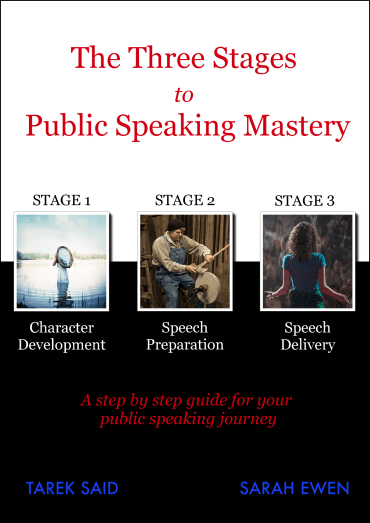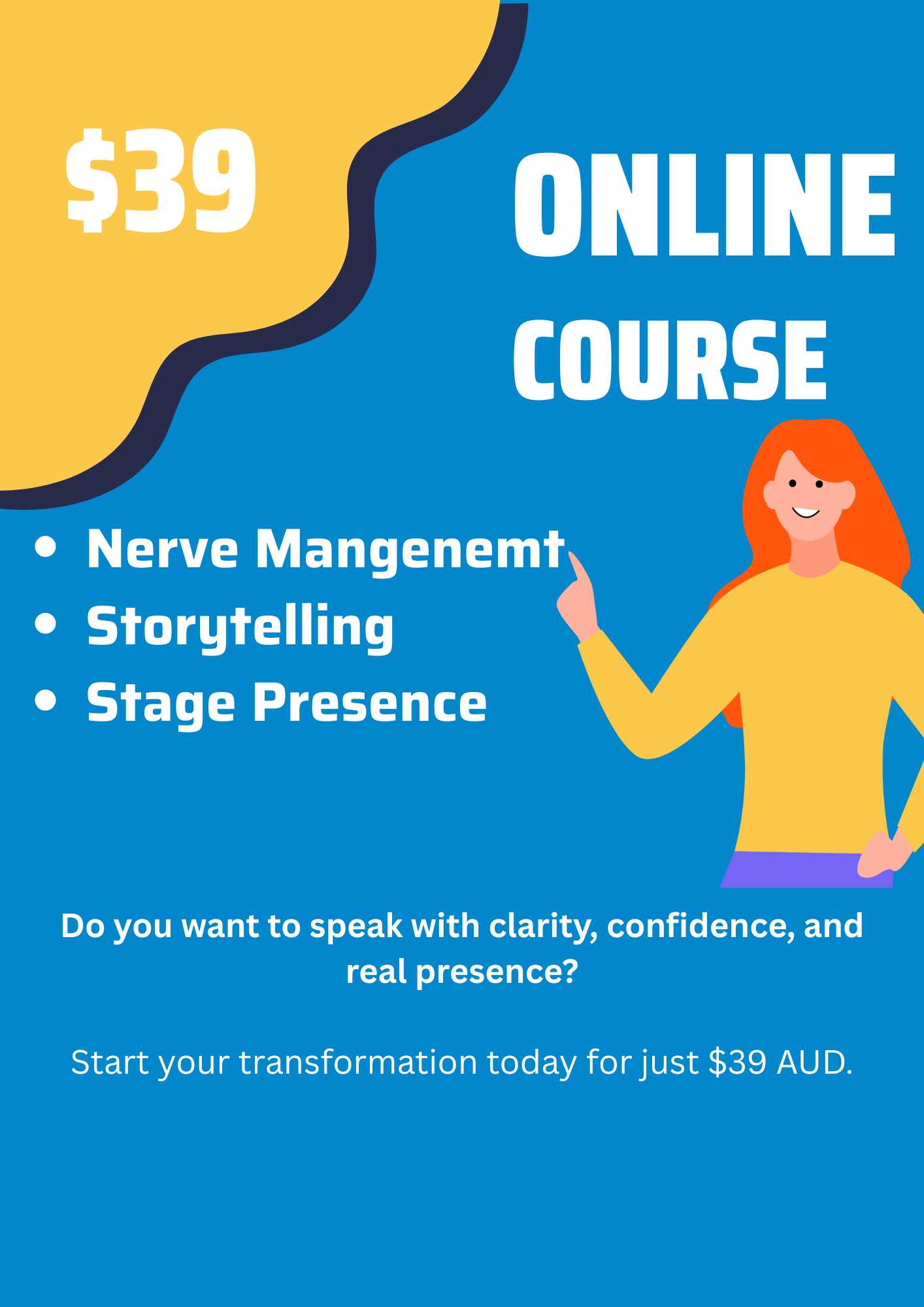A SPEECH IS NOT A SPOKEN ARTICLE, SO DON’T TREAT AS ONE
Just as movies and books are two different mediums, so are speeches and articles. Movies are not acted out books, and speeches are not spoken out articles. However, a lot of people write a speech down the way they write an article and then they read it out to the audience. But we have to ask ourselves: In today’s world, we can send articles to thousands of people with a click of a button and they can read it at their own time. Do we really need to read it out for them?
There are a number of differences between speeches and articles. Once we know these differences, we know how to deliver speeches and achieve results in a way that no article can ever achieve. Below I discuss seven of these differences.
1. SPEECHES APPEAL MORE TO EMOTIONS
The main difference between articles and speeches lies in the way they speak to minds and emotions. Articles are better when it comes to speaking to minds while speeches are better when it comes to speaking to emotions.
Articles can deal with many points and can explain each point in great detail. If a reader misses a point, he can go back and read it again. If she felt tired while reading, she can put the article down and come back to it later. If the ideas of the article were too complicated, the reader can break them down and sometimes rewrite entire paragraphs in a way he or she would understand.
Speeches on the other hand don’t have that luxury. When we listen we have lower attention spans, we don’t have the option to go back and read the last sentence and we don’t have the time to think things through. However speeches have a strength that articles don’t have. They are better at speaking to emotions. This fundamental difference between the two is the core that the all other differences lie upon.
2. SPEECHES HAVE A PERFORMANCE ELEMENT
As a speaker, you want to think of yourself as somewhere between a writer and a performer. When you speak, you have extra communication channels that you don’t have when you write. These channels are your voice tone, your body language and your eye contact.
When you work on your speeches and presentations, utilise these extra channels. Infuse your voice with your excitement, allow your body to be moved by your passion and use your eye contact to connect with the audience in a way no article can ever do.
I am noticing that a lot of acting schools are teaching public speaking nowadays. While this a sure a sign that public speaking is a kind of performance, it is important to note that it should not be thought of as acting. In other words public speaking is about being your yourself, not someone else. You still need elements of acting such as voice projection, voice intonation and body expression. But you should use them to channel your inner self, not someone else’s.
3. SPEECHES HAVE SHORTER SENTENCES
Since we have lower attentions spans when we listen, it is important to have shorter sentences when we speak. Aim at making your sentences short and snappy.
For example, here is an excerpt from wikipedia’s article on climate change
The ocean is a fundamental part of the climate system, some changes in it occurring at longer timescales than in the atmosphere, as it has hundreds of times more mass and thus very high thermal inertia, with effects such as the ocean depths still lagging today in temperature adjustment from effects of the Little Ice Age of past centuries.
This sentence may be easy to grasp as a reader, but it is very difficult to understand as a listener. It is long with many ideas. If you want to say this sentence in a speech, you want to identify the main points of the sentence and then put them together in a short snappy way. For example, you can rephrase the previous sentence as follows:
The oceans’ temperatures change at a very slow rate. Do you know that the temperatures of the oceans’ depth are still influenced by the temperatures of the Little Ice Age?
4. SPEECHES HAVE LESS STATISTICS AND NUMBERS
This is another necessity that stems from the fact the listeners have lower attention spans. One of the quickest ways of losing the audience is to have too many numbers and statistics. For example, here is an excerpt from Wikipedia’s article on solar power:
The International Energy Agency projected in 2014 that under its “high renewables” scenario, by 2050, solar photovoltaics and concentrated solar power would contribute about 16 and 11 percent, respectively, of the worldwide electricity consumption, and solar would be the world’s largest source of electricity.
Once again, this sentence may be easy to grasp as a reader, but it is very difficult to understand as a listener. It is has way too many numbers. If you want to say this sentence in a speech, you want to identify the main points of the sentence and then put them together with little to no numbers. For example, you can rephrase the previous sentence as follows:
The International Energy Agency projected that by 2050, solar would be the world’s largest source of electricity.
5. SPEECHES AND ARTICLES HAVE DIFFERENT PURPOSES
You may argue that since speeches are supposed to have less details and less numbers, they are inferior to articles as they deliver less information. That would be true if the purpose of a speech was to deliver information only. But speeches and articles have different purposes. While the purpose of an article is to elaborate on ideas. The purpose of a speech is to take a simple idea and work on making the audience respond to it emotionally. You can aim at making them excited, inspired or persuaded by it.
It is this trait of speeches that makes them one of the most powerful tools of communication. It is a known fact that when we are emotional we understand and remember information more effectively. For example, most of us can follow and remember stories from comedians like John Oliver way more than we can remember and follow stories from other serious channels.
Here is another example, in this TED talk, Aaron O’Connell was explaining how he could make a piece of metal vibrate and not vibrate at the same time. Something scientists thought could only apply to subatomic particles such as electrons. As a quantum physics enthusiast, I found this experiment mind blowing, but Aaron delivered it in a way that the audience didn’t appreciate how important this experiment was. It wasn’t until he said at minute 6:02 “I think this is really cool” that the audience appreciated it.
6. SPEECHES RELY HEAVILY ON REPETITION
Remember, the audience don’t have the luxury to go back and read the points you made. If they miss a point or lose track of your thoughts you lose them for the rest of the speech. That’s why it is your job to keep the audience on track. You can do that by reminding them constantly of what you are talking about and where you are at in your speech. For example let us say you are delivering a speech about the benefits of gender equality and you want to make the following three points:
- Gender equality enhances the economy
- Gender equality increases the overall happiness of the society
- Gender equality empowers both men and women
One way to keep the audience on track is to remind them of the points you made as you move from one point to another. For example when you move to point 2 you can say something like: “Gender equality does not only enhances the economy, it increases the overall happiness of the society”. And then when moving to point 3 you can say something like: “I talked about how gender equality enhances the economy and how it increases the overall happiness in the society, now I will talk about how it empowers both men and women.”
It is important to note that in some cases repetition doesn’t work and it may sound too affected. This mainly happens when the points are too short. The idea is to keep asking yourself when you are writing and practicing the speech: Do I have too many ideas that I would have lost the audience by now? Are my ideas too long that the audience may not be able to follow? If so, work on repeating the ideas to make sure everyone is on track. Remember it is an art not a science.
7. SPEECHES HAVE TO BE FULL OF STORIES
Finally, speeches have to be full of stories. Stories are fun, memorable and easy to listen to. In the speaking world, where the audience has very short attention span, stories are your best friends.
You can use stories for many different purposes: to explain an idea, to support an argument, to inspire the audience or to entertain them. A simple, relevant story can demonstrate your point way better than hours of explanation.
For example, suppose you want to talk about your company’s performance for the last quarter. Instead of talking about dry information such as figures and numbers and statistics, aim at creating a story. You can talk about what happened behind the scenes – the thought processes that were behind certain decisions, the worries that you had to face, the excitement when you heard certain news. With little creativity you can turn any piece of information into a story.


